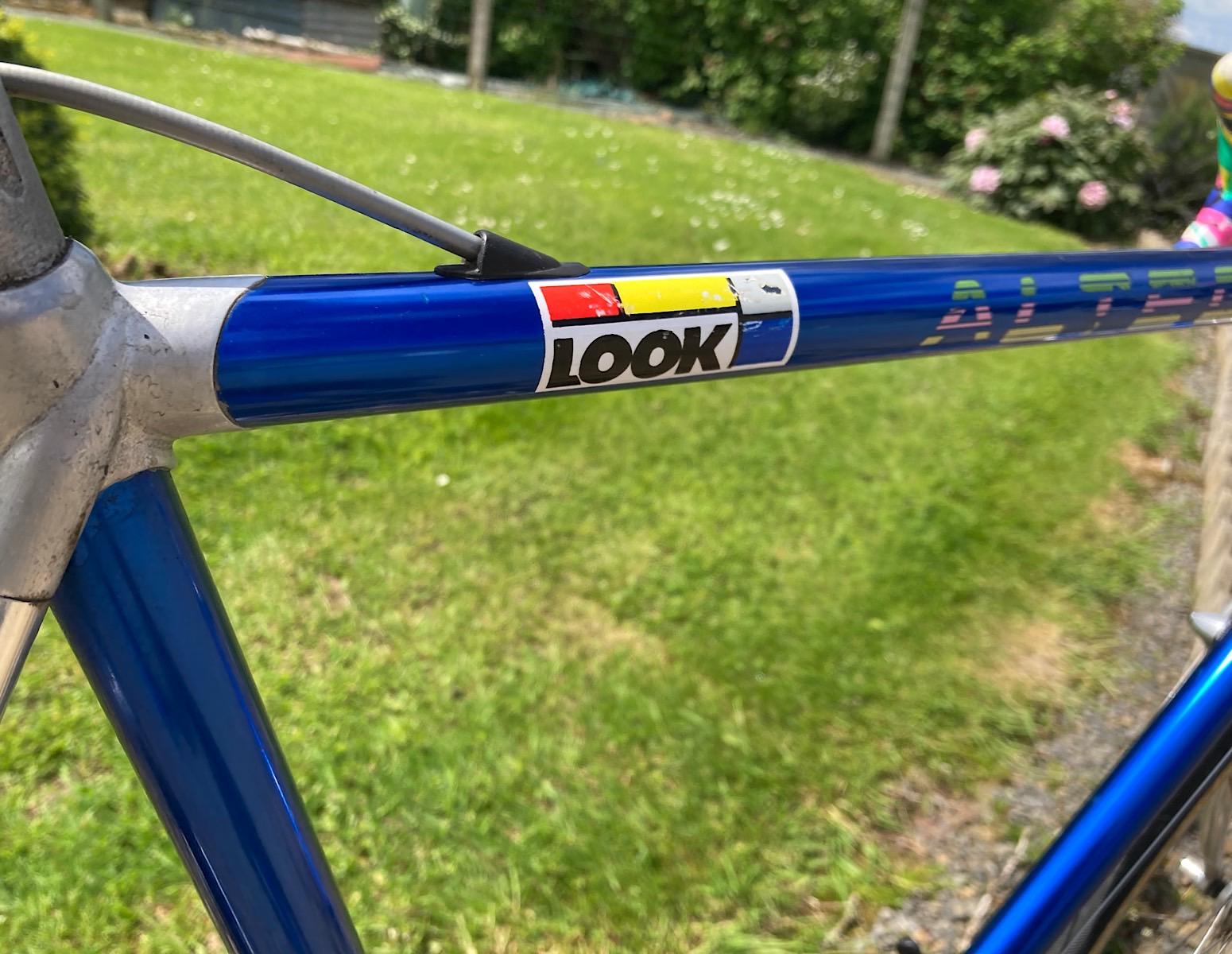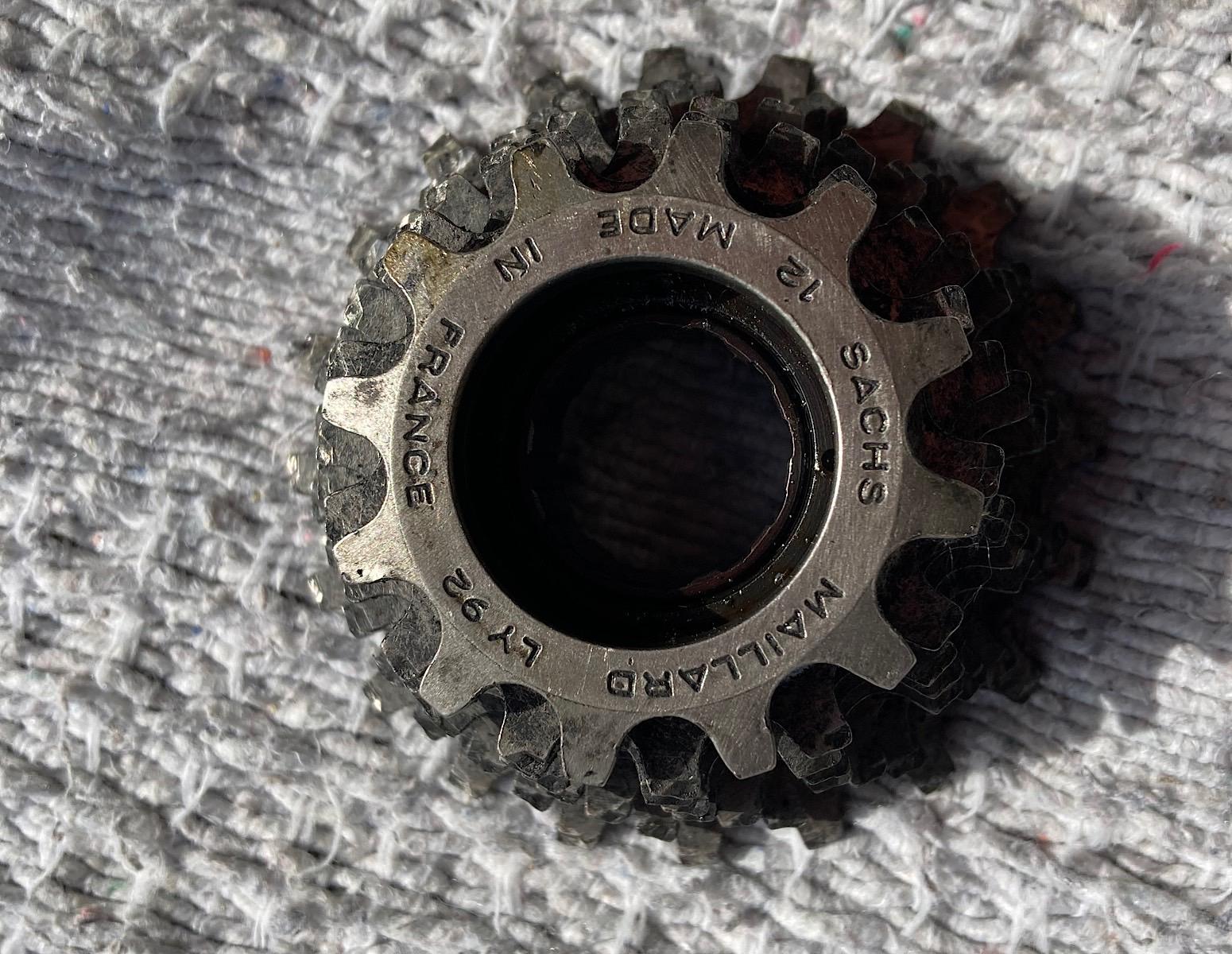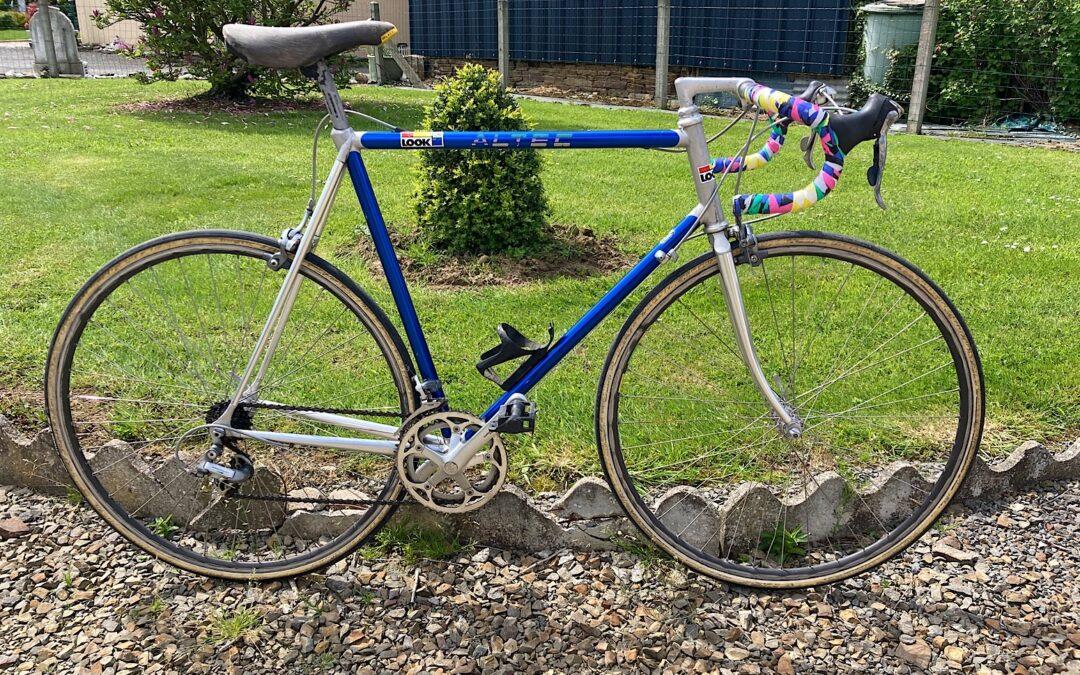Finding My Stronglight Altec
Often you expect rare and high end bikes to be properly advertised for sale, with a good description, detailed photographs and set at a price that satisfies the owner’s expectations. In the case of this Stronglight Altec, the listing fell in my favour: the bike was described as a “Look“, there were only three images of it which were low on detail, and lastly, the owner lived in the middle of nowhere. The nearest city was 50 miles away and getting to his house wasn’t easy for any astute urbanite. As it was advertised as a Look bike I was naturally interested in buying it, but when I managed to read the name “Altec” on the top tube, my interest was really piqued.

Stronglight? Really?
I had no idea that Stronglight ever made a bike frame. I’m well versed in their components, especially their lovely cranksets like the 49D and 93, headsets and seat posts. I had never heard of the Altec, seen the logo of the flying eagle or heard talk of a Stronglight frameset. Fundamentally, they are a rare thing, not many were made and their production only lasted a few years. I don’t believe any were exported for sale outside of France. When I finally worked out that the bike I was interested in was actually such a special and rather unique find, I jumped on it.

Watch the Video
I thought it was definitely worth making a video of the bike, I believe it’s the best way to present a classic model and what condition it’s in. Below is the video I made showing it before I resolved some issues that were necessary to get the bike back on the road. Just before I was about to make the 40 minute drive to buy the bike, the owner told me that the rear Shimano 600 shifter was broken and there was no click or tension when trying to engage the gear lever. This problem, I realised, could end up being expensive; replacing a Shimano gear shifter these days can cost nearly the price of a complete vintage bike.
The Frame and Fork
I love the anodised tubes of this bike, and being a lovely midnight blue colour only enhances them for me. The serial number on the bottom bracket shell is 0792, which I presume means it was built in 1992. Just the texture and shine of these types of tubes are so aesthetically pleasing, you feel compelled to run your fingers along them. Like Alan and Vitus bikes of the time, the aluminium tubes are glued into lugs, which are not painted and provide a nice contrast with the tubes themselves. The rear triangle and fork match the natural satin finish of the lugs, head tube and fork, which provides the visual parity and balance, which makes the frame look so special. Having glued aluminium alloy tubes glued into lugs that look just like a traditional steel lugs was a sort of cross-over of design at the time, and still looks superb today.


A Bit of History
The prototype for this type of glued anodised aluminium alloy frame was made by Alan, the Italian brand which first began constructing them in 1972. These Alan frames were used in professional racing, and as the decade progressed, so French brands began to experiment more with aluminium frames in traditional steel sizing. Roger Roche led the way in France in the mid 1970’s, building aluminium frames using sockets and so reducing weight and adding more efficiency in their construction. By the late 1970’s, Paule Defour of CLB and Antoine Dumas of Bador began selling these frames under the name Vitus, who are the most celebrated firm in France for such frames.



Lyon – Home of Altec
Sronglight put their name on the frameset but the tubes themselves were built by Pechiney which were an established company supplying aluminium tubes in many industries. The Altec was the brainchild of M. Ribeaucourt, who had close ties to the TVT brand which also made high quality frames. The lugs, shells and dropouts would have made in the Lyon area, and the Altec workshop itself was small, perhaps only six people worked there. There is a microcosm of cutting edge bike production around the city of Lyon at this time, with small workshops building specialist parts for progressive and high-tech bike firms, producing some of the most beautiful and lightest bikes of the twentieth century. For a great post on the subject, scroll down on this page and read about a long comment on the story.

Repairs For The Road
I negotiated a lower price for the bike after the owner told me one of the Shimano 600 shifters was broken, and in the end I think I bought it for a good price. However, it didn’t take me long to find out that there was more than just one problem to fix: I didn’t have just one shifter to replace, but two; the left ( front ) Shimano 600 was also not working, it was as limp as a soggy biscuit. The only set of used 600 levers on Ebay Europe was priced at over 170 Euros, so I turned to local classifieds and managed to get two separate levers, mismatched but both Ultegra 9 speed, and in working condition, for less than 70 Euros. With the added cost of new cables for the brakes and derailleurs, the total cost of repairs only came to about 80 Euros.

Curing a Freewheel Problem
One small but annoying problem the bike had was this: when walking the bike, the crank turned in synch with the freewheel, when both should have just remained stationary. This also happened when the bike was on the repair stand, so that when I stopped pedalling the bike and the rear wheel was spinning, the crank would continue to rotate by itself. I was quite sure the problem was a sticky hub, but it turned out that the issue was the freewheel itself; the bearings in the freewheel were clogged, meaning that it required more energy to stop rotating than for the pawls to spin inside it and for the freewheel to remain stationary. I removed it and cleaned the old grease off, then reinstalled it: it worked perfectly after this simple cleaning job.

What’s it Like to Ride?
I’ll be honest, it’s a tad too big for me. I feel a bit stretched out with the longer stem but can replace that. Under the bottom bracket is scratched “57”, which I presume is its size, but it feels bigger. Apart from the size issue, the bike is a lovely ride. There’s a delicateness about it, it’s got a feel that’s perfectly balanced, the frame has a stiffness and wispy lightness that makes it vibrant and responsive on the road, but something tells you to ride it precisely, within its limits, as you’re on such a thin aluminium alloy frame, glued together. Put it this way: when a guy parks next to me on his modern aluminium bike with extra large tubes, beefy and rather graceless, it makes me feel like I’m riding a unicorn while he’s on an humdrum horse.

The Dream Bike
I would ditch the Shimano 600 components, to be frank. I’ve never been a big fan of this FC6400 groupset, the derailleurs, crank and brakes are all a but..well, dull. I would rather replace them with those most wonderfully aesthetic and lightweight derailleurs, the Mavic SSC. The Mavic 500 hubs and Mach 2 tubular rims are a good match for the frameset, even though changing the tyres is a big pain compared to clinchers. And yes, that handlebar tape really needs to go, I have no idea why that’s on there! I hope to be making some changes over the summer.



It’d be good to also own this French Alpine in matching blue..



Recent Comments